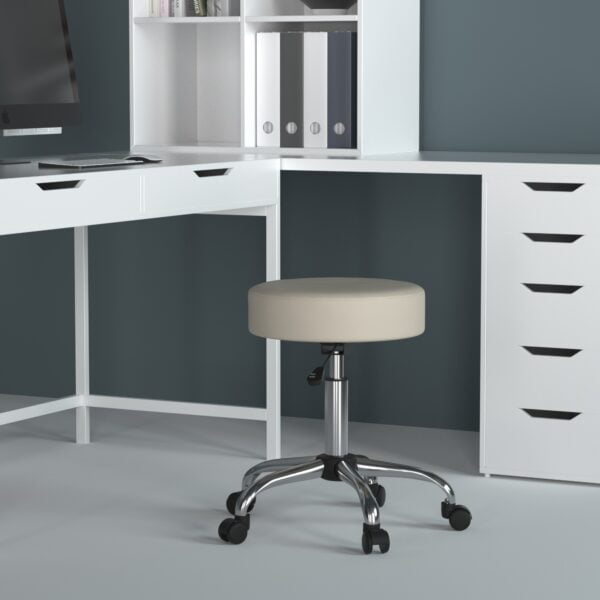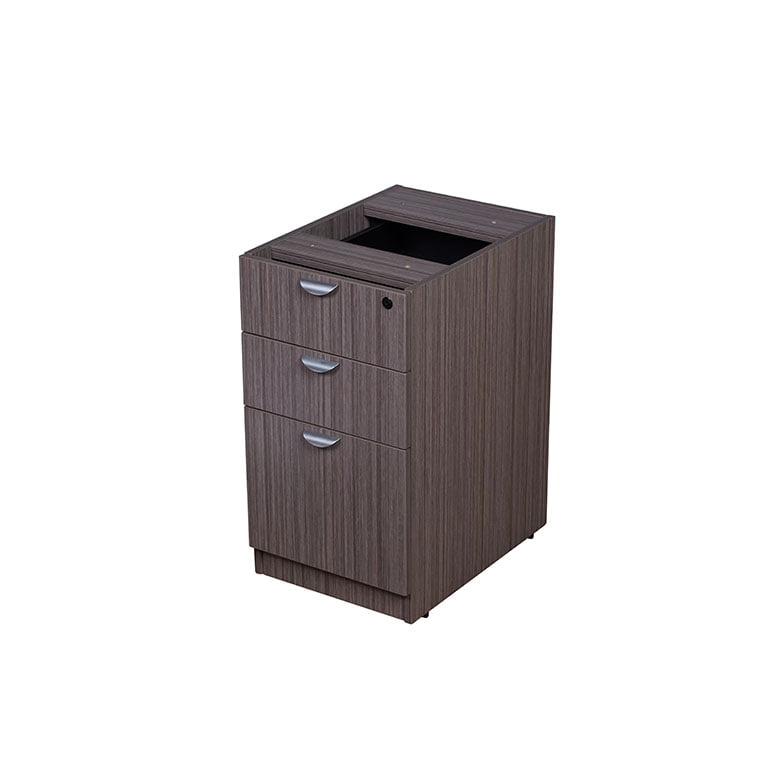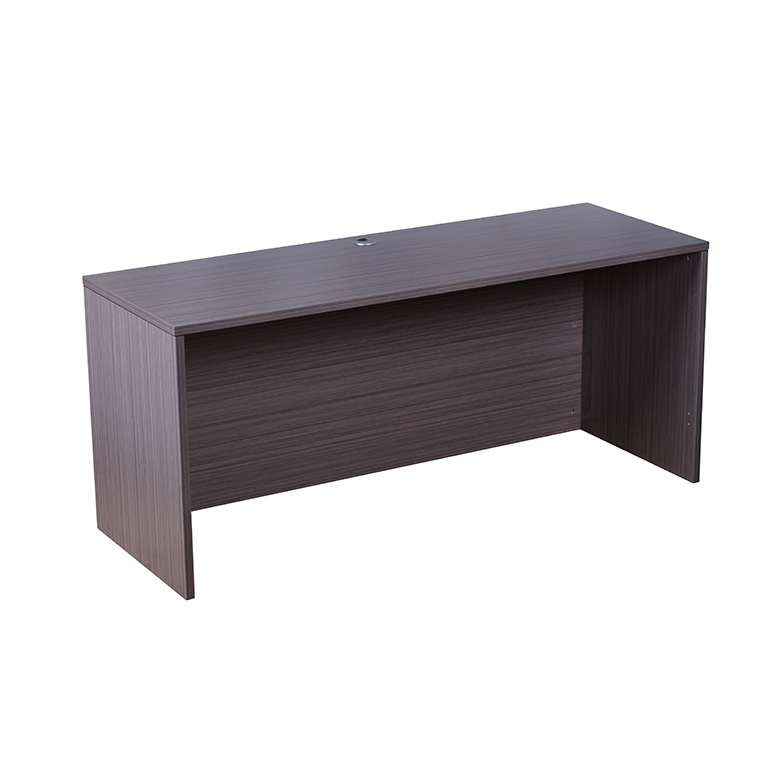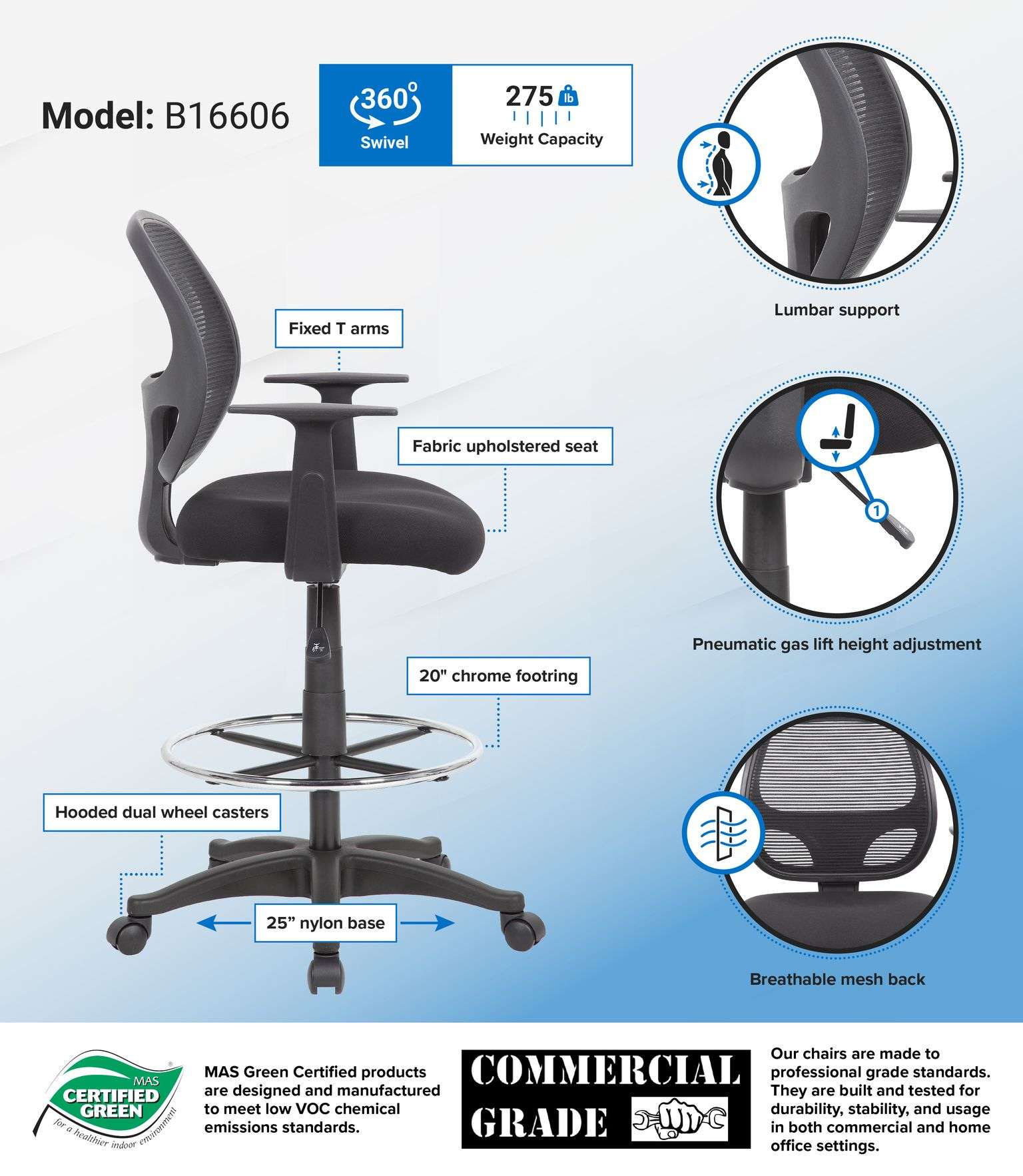The fast-paced healthcare environment demands efficiency, comfort, and mobility. Therefore, you should invest in smart furniture that is functional yet attractive. A rolling medical stool is an example of a modern and elegant piece of furniture. Whether you are a physician, nurse, dentist, or technician, this furniture will improve your daily workflow. At the same time, the rolling feature of the chair will lower your physical strain and enhance patient interaction.
You will get numerous designs and finishes for these stools. With so many options, it can often become overwhelming for you to choose one. This guide breaks down everything that you should know before buying a rolling medical stool. It must suit your needs, space, and budget.
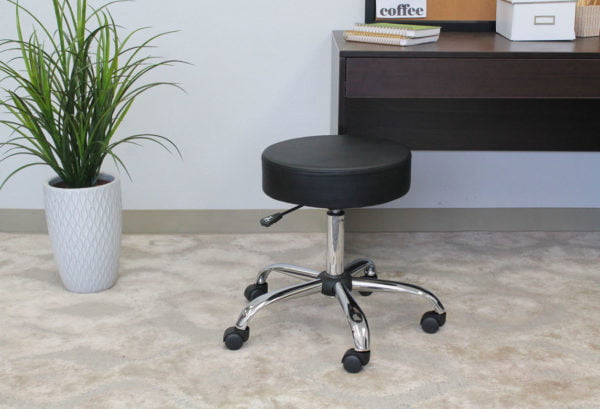
Why Rolling Medical Stools Matter
Medical professionals spend a long time in either a seated posture or a standing one. A rolling stool often helps them in the following ways:
- Enhance mobility within exam rooms, labs, or operating areas
- Reduce physical strain on the lower back and legs
- Improve ergonomics, posture, and energy during long shifts
- Increase efficiency, especially during repetitive tasks or procedures
The right stool not only helps them to support their posture but also increases their efficiency at work.
Key Features to Consider When Choosing a Rolling Medical Stool
The following are the essential features that you should look for in a rolling medical stool:
- Seat Comfort and Design
Look for high-density foam padding, contoured edges, and breathable upholstery. A wider seat base may be better for long durations. On the contrary, narrower options allow greater movement.
- Padded vs. unpadded: Padded seats are essential for long-term use.
- Backrest vs. backless: A backrest adds lumbar support. It is ideal for prolonged tasks. Backless stools allow more flexibility.
- Ergonomic contouring: It reduces pressure points and improves posture.
- Height Adjustability
Neutral posture during various procedures. Therefore, choose a stool with a suitable height. It ensures a smooth pneumatic or hydraulic adjustment.
- Pneumatic lift: Most common, allows quick, silent adjustment.
- Hydraulic systems: Often more durable and support heavier weights.
- Ensure the stool matches the height of your workspace or exam table.
- Mobility and Casters
Mobility is crucial in any clinical setting. You should choose the best-in-class casters to get smooth clinical operations.
- Hard casters: Best for carpeted surfaces.
- Soft rubber casters: Better for tile or laminate floors, preventing scratches and noise.
- Locking wheels: Useful when stability is critical, such as during medical procedures.
- Swivel Function
Most medical stools feature 360-degree rotation. It allows professionals to switch effortlessly between tools, patients, or equipment. This minimizes repetitive strain and improves workflow.
- Weight Capacity and Durability
Never fail to inspect the weight limit of the chair. The maximum weight capacity makes it ideal for the chair to be used sufficiently without necessitating any repairs on the same frame. If you require a chair with increased segmentation tolerance, you should look for models of industrial grade. These are generally stronger, used to carry heavier weights, and constructed to have reinforced bases or metal frames.
- Material and Upholstery
Choose materials that are easy to clean and resistant to spills, stains, and disinfectants. The following are the commonly used materials for rolling stools.
- Vinyl or PU leather is popular for its ease of cleaning and durability.
- Antimicrobial fabrics ensure added protection in sterile environments.
- Stain and fluid resistance is a must in medical and dental settings.
- Footrests and Extras
Some stools include footrings or footrests. These ensure added comfort, especially for taller stools. Optional features may include tilt functions, memory foam seats, or ergonomic backrests.
Specialty Stools for Different Healthcare Professions
Depending on your medical profession, you might need the following specialty stools:
- Dentists and Hygienists: These medical professionals need precise positioning. Therefore, they should prefer saddle-style stools or stools with small, adjustable backrests for stability.
- Nurses and Medical Assistants: They should use lightweight, maneuverable stools. These allow them to move easily between workstations and patients.
- Lab Technicians and Phlebotomists: They require long hours of work in a sitting posture. Hence, a chair with a foot ring or ergonomic support is best for them.
- Doctors and Surgeons: Advanced lumbar support or hydraulic lift is required for these professionals. It offers maximum control during procedures.
Buying Tips: How to Choose the Best Stool
Before buying rolling medical stools, you should keep a few tips in mind to find the best chair. These are as follows:
- You should evaluate your needs first. Consider your usage. Do you need one that supports long hours of seating, or do you need to often move from patients to your workstation?
- Determine the time you need to sit on the chair. The longer you need to sit, the more critical comfort and ergonomics become.
- Reaching or hunching over your workstation can cause injury. Therefore, you should choose a chair that perfectly matches the height of your workstation.
- Set a realistic budget. Look for high-end models rather than cheap ones. It will ensure the long-lasting performance of the chair.
- You should try a trial before buying it. If you are purchasing it online, read reviews to get a clear idea of its performance & durability.
Maintenance and Care
Proper maintenance and care are necessary to ensure the long-lastingness of the stools. These maintenance steps are crucial:
- Wipe down with hospital-grade disinfectants regularly
- Check casters for debris buildup or wear.
- Inspect hydraulic or pneumatic lifts for smooth function.
- Store stools indoors and away from moisture when not in use.
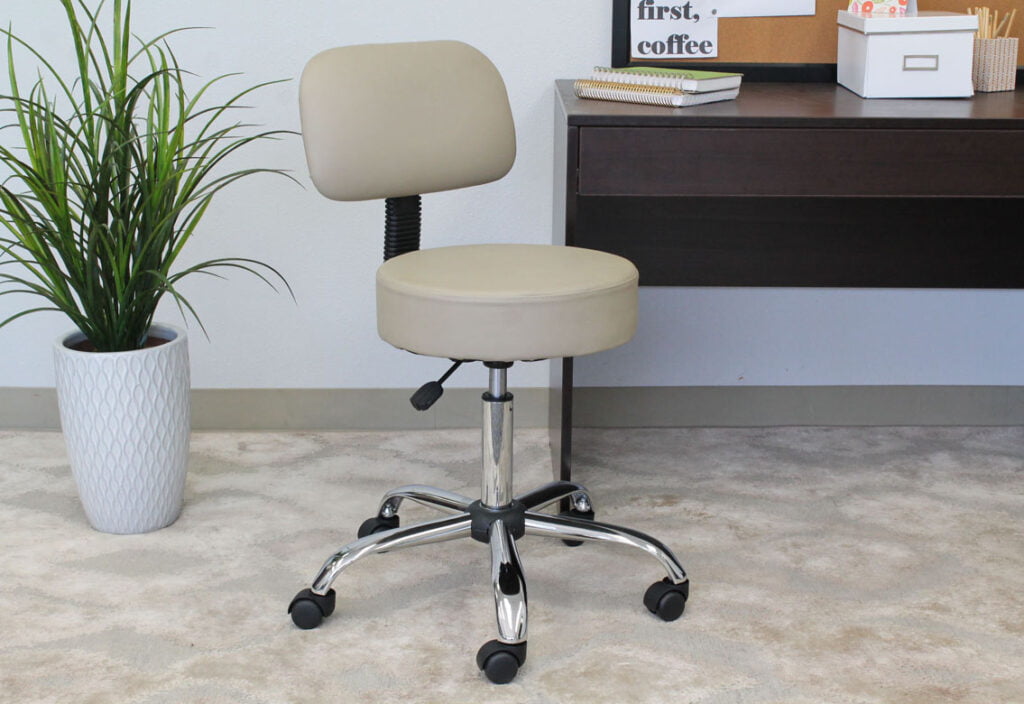
Final Thoughts
A rolling stool for medical purposes might often seem like a small investment. However, it plays a critical role in your daily comfort and performance in your work field. By understanding the features and your specific needs, you can find the best model for the stool that is best for your workplace.
At Ergoback, we provide you with the best-in-class rolling medical stools. These are designed keeping in mind your daily comfort and workplace requirements. Irrespective of your medical profession, you can choose one that will increase your productivity and ensure comfort.
FAQs
- What is the best type of stool for long medical shifts?
A stool with thick padding, ergonomic contouring, and a supportive backrest is ideal for comfort during extended periods of sitting.
- Can I use a rolling medical stool for all types of flooring?
The rolling medical stools are suitable for use on any type of flooring. However, ensure that you put the correct casters into it. For example, use hard casters for carpets and soft rubber casters for tile or hardwood floors.
- Can I get height adjustment options with all types of rolling medical stools?
Most of the stools have height adjustment options. You can look for pneumatic or hydraulic adjustment systems. These stools allow smooth, customizable height changes for various tasks and workstations.
- How can I clean or maintain medical stools?
You can clean the stools with non-abrasive disinfectants. Also, check the wheels occasionally and check for any loose components or wear on the seat material.
- What is the ideal type of rolling stool for dentists?
Dentists should prefer a saddle-style or back-support stool with swivel and tilt functions. These enable them to maintain precision and reduce fatigue during procedures.
- Can rolling stools support heavier users?
Yes. You can find different models of these stools. These come with different weight capacities. If you need a stool to support an excessive weight capacity, you can look for stools made of heavy-duty materials.
- Are backless stools bad for posture?
Backless stools encourage core engagement. However, prolonged use may lead to fatigue. For longer shifts, a backrest is often preferred.

